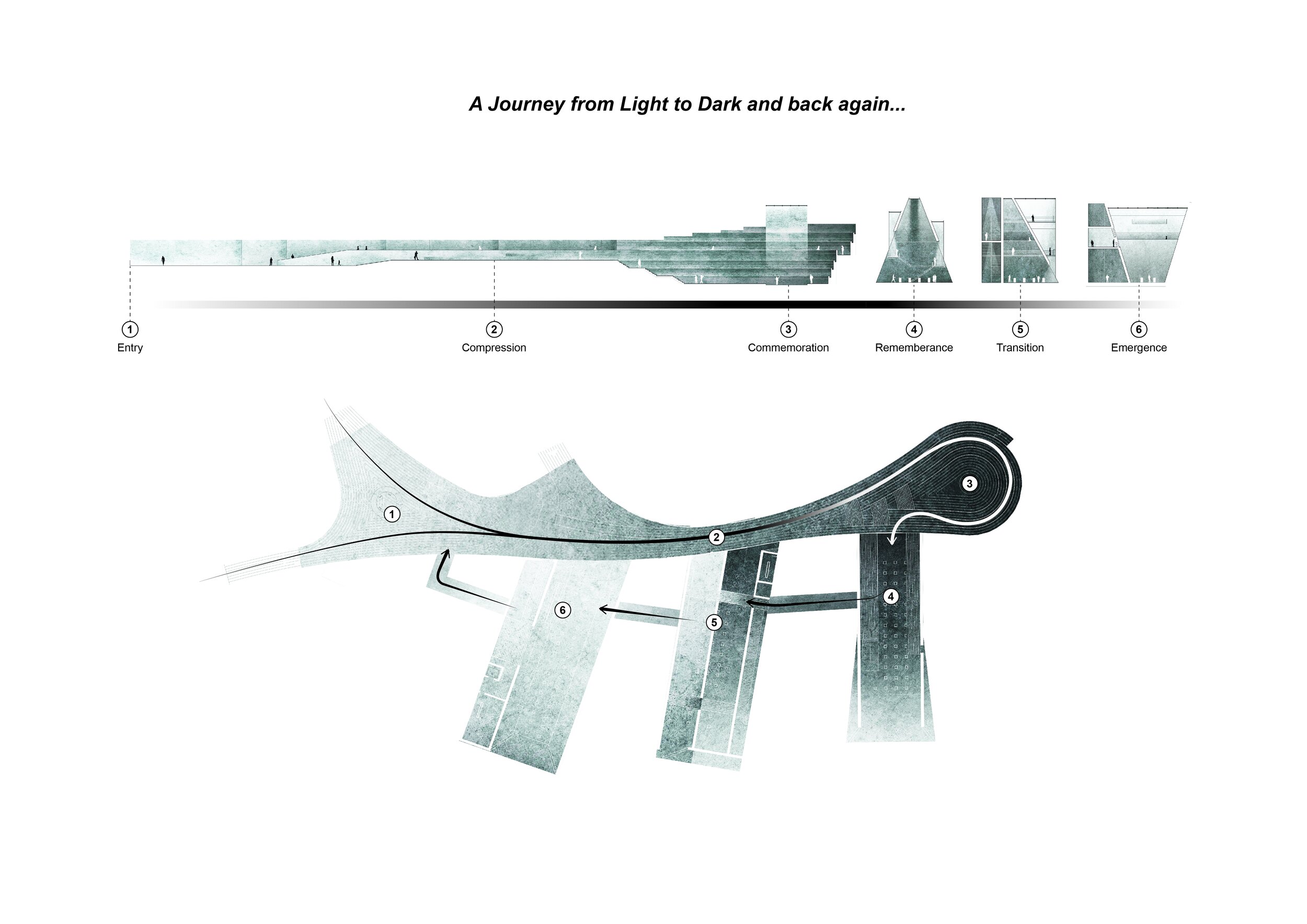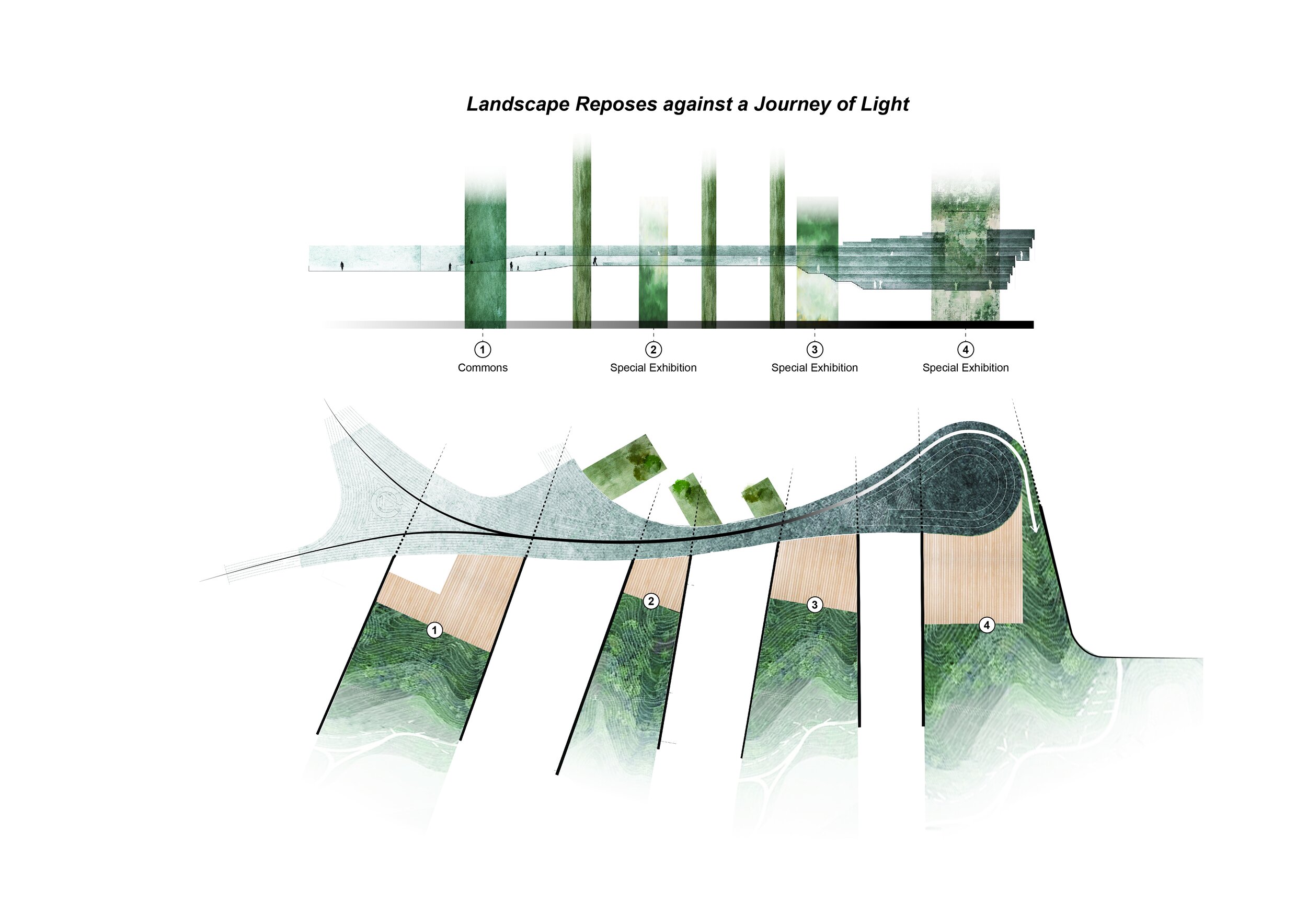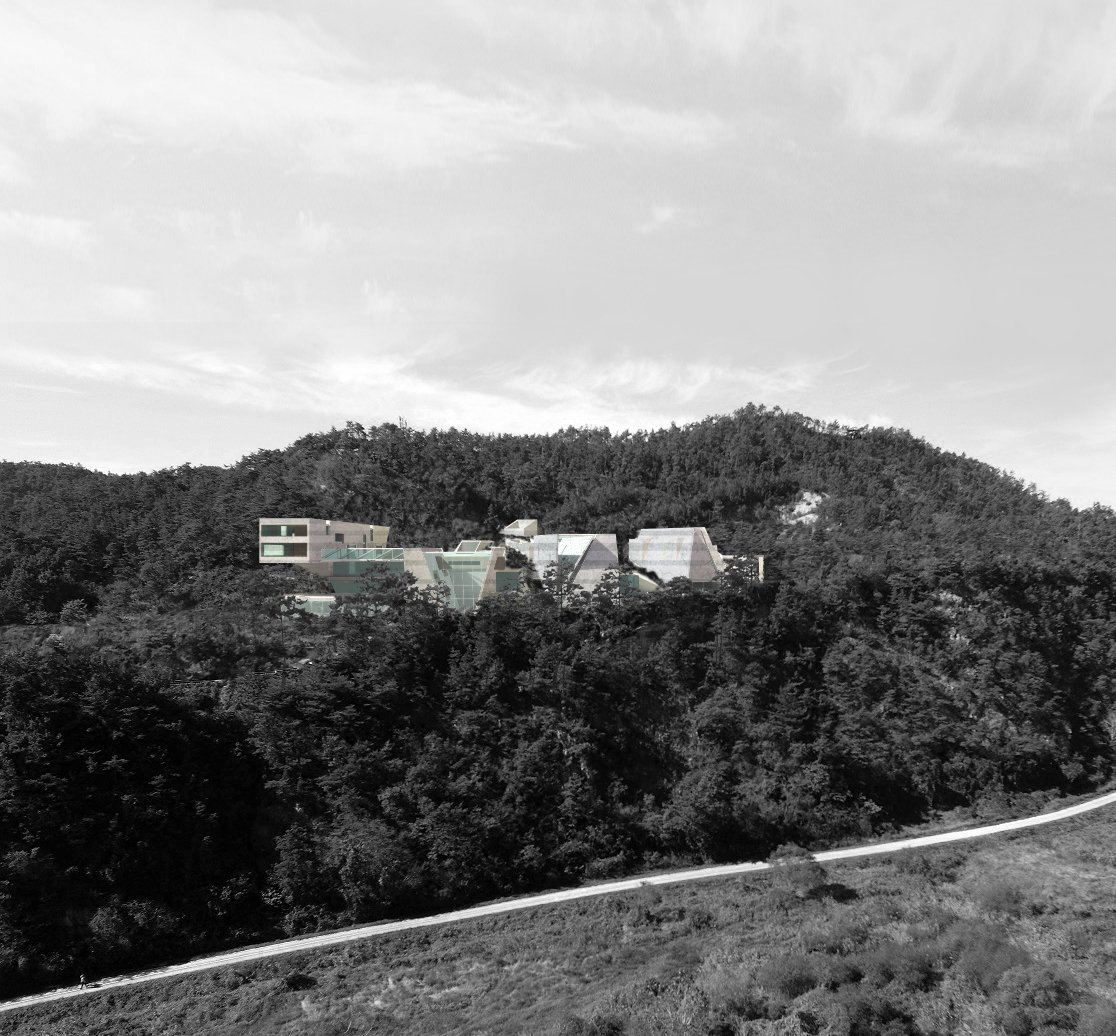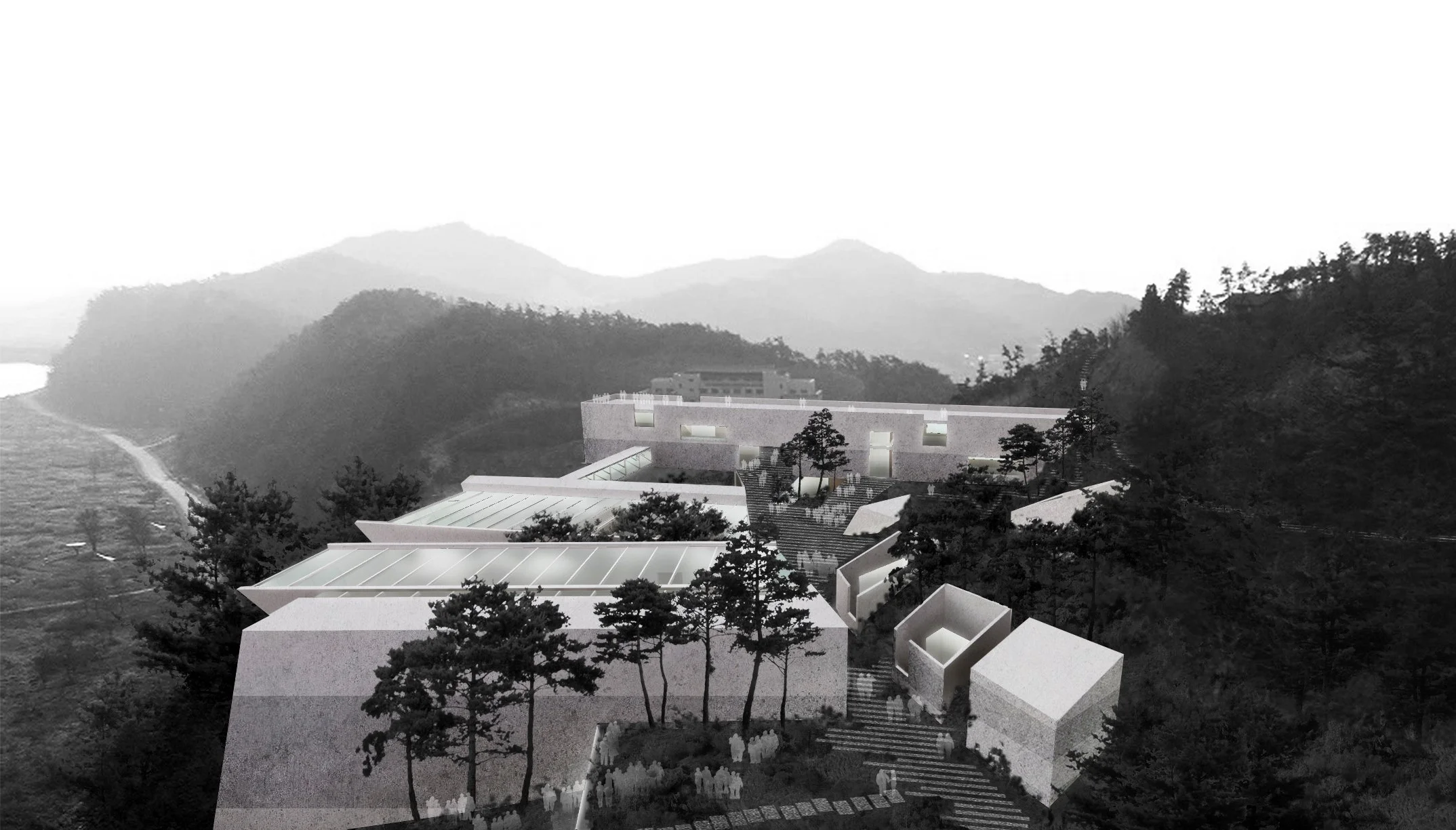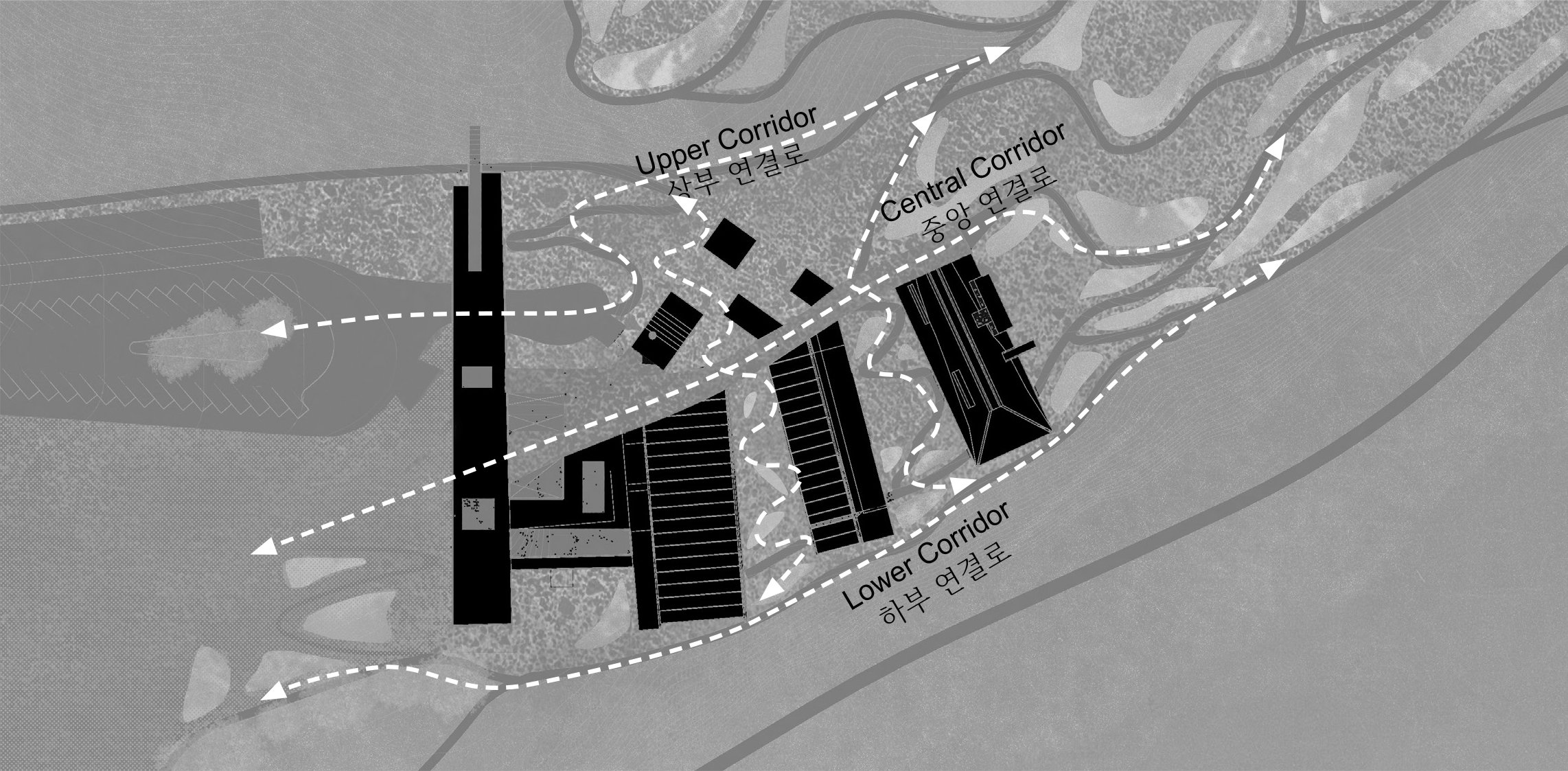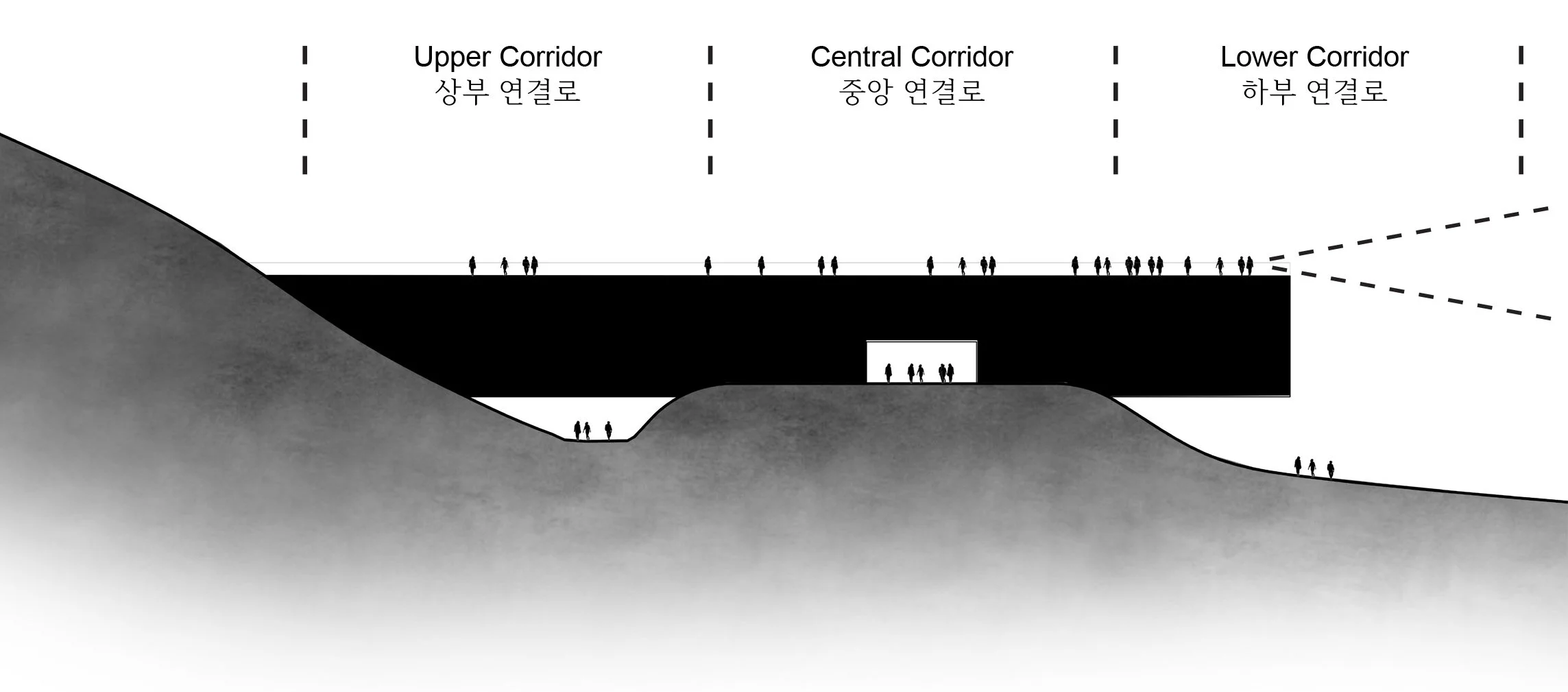Remembrance
Client // Jeollanam-do Cultural Resources Division • Location // Jeollanam-do, Korea • Program // Museum and Cultural Park • Status // Proposal / 2022 • Area // 8300m2 • Team // Clayton Strange, Devin Dobrowolski, Evan Shieh, Sun Park
Healing the Landscape : Righteous Army History Museum
As a repository of society’s collective memories, landscape can be seen both as the place of belonging and as the place of heroic struggle. Landscape bears the scars of past eras and past actions in physical form and in our conscience. This proposal aims to heal the natural landscape and generate a site of collective cultural healing through the integration of museum and natural surroundings.
The starting point for the project is the mountain, and its exalted place in Korea’s culture and patterns of land use. The mountain remains the most visible and emblematic bastion of undeveloped nature and a common destination for weekend. Reframing the mountain itself as a destination for healing and respite, the project aims to build an environment of immersion in natural surroundings through the integration of architecture and landscape, commemorating Jeollanam-do’s Righteous Armies and the place they protected.
Vision for the Site
Our proposal restores the natural topography of the mountainside through a cut-and-fill strategy that heals the scars of heavy-handed development from the early 2000s. During this process the existing buildings on the site are demolished and their materials retained and reconstituted as elements in the landscape. Gabion retaining walls are constructed using rubble from demolition, sculptures are constructed in the landscape through the reuse of elements such as wooden columns and other materials. In this way the landscape is reshaped while maintaining a trace of the past. The aesthetic of the resulting historic park juxtaposes the roughness of materials remaining from this process with the softscape of restored nature and the use of disturbance adapted trees.
The Museum and Site
Forgoing compact approaches to the design of the museum, our proposal assumes a dispersed arrangement as a series of containers embedded in the ground and arranged around a central spine, maximizing opportunities for connections to the outside. The design of the museum returns visitors to the ground, evoking a burial site or a spiritual experience. The arrangement of relics evokes the self-similarity and repetition of a war memorial, eliciting remembrance, anonymity, and common cause. Exhibition spaces are conceived as a series of vessels for collective memories, embedded in the landscape and removed from the noise of contemporary society. We are presented with the events of the past and allowed time for reflection and contemplation where the silence of the ground allows us time to heal.
General Layout
The project programs are arranged through three distinct but connected systems of circulation and three architectural types, all linked along an integrated central spine and commons. The education program takes the form of a mat building, encouraging contemplation, introspection, and focus. The office program takes the form of a linear bar, maximizing access to light, air, and view, while forming a gateway and front façade for visitors. The office building projects dramatically from the hillside, allowing the roof to function as a spectacular observation deck for tourists and visitors to the park. The exhibition spaces are conceived as distinct objects linked through the spine which doubles as the commemorative space and links all the project programs. Permanent exhibition spaces take a piano key pattern, alternating with amenities and special exhibition spaces; maximizing view and integration with the natural landscape. The three permanent exhibition spaces assume self-similar iconic forms, giving the project a distinctive appearance from afar.
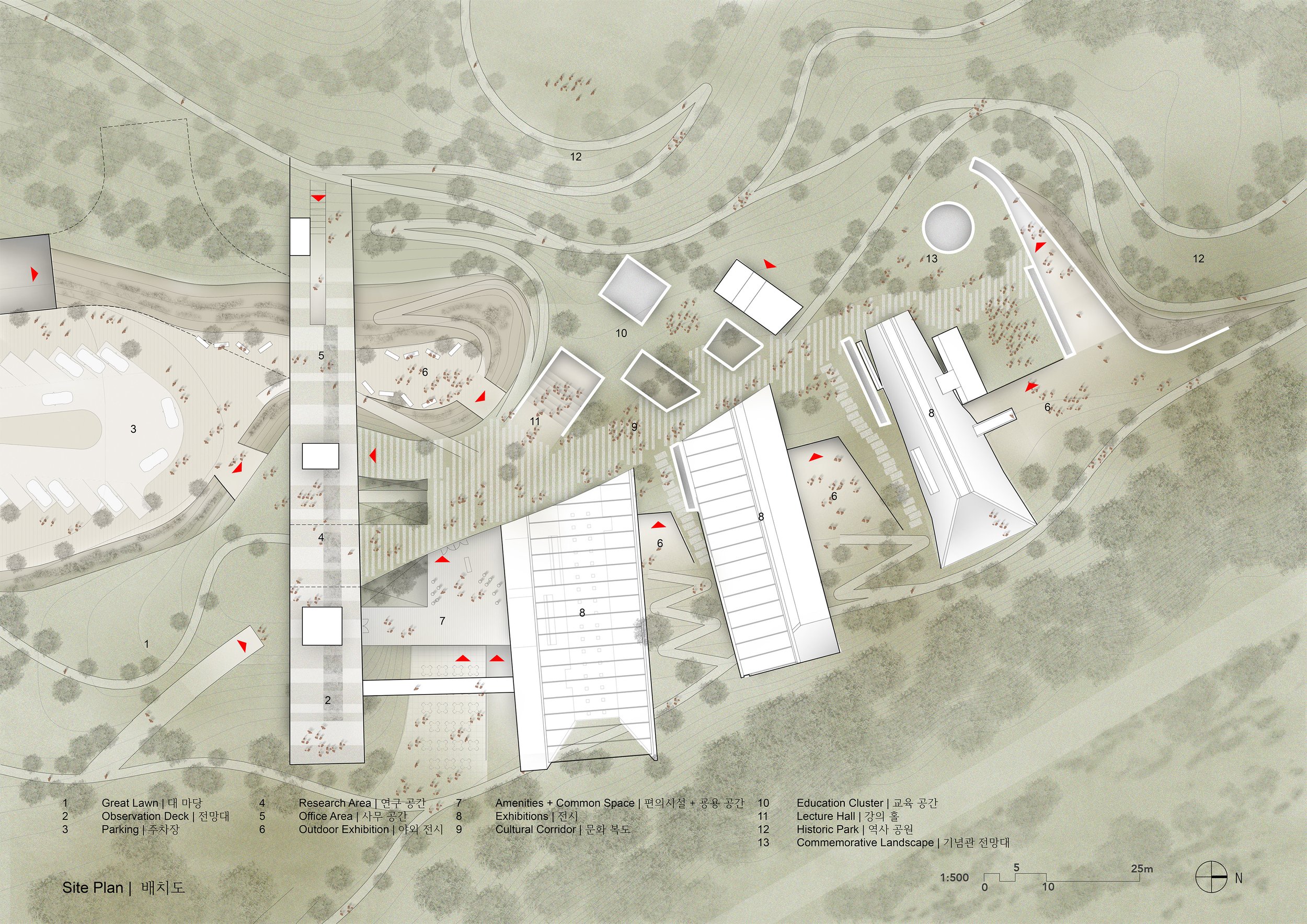


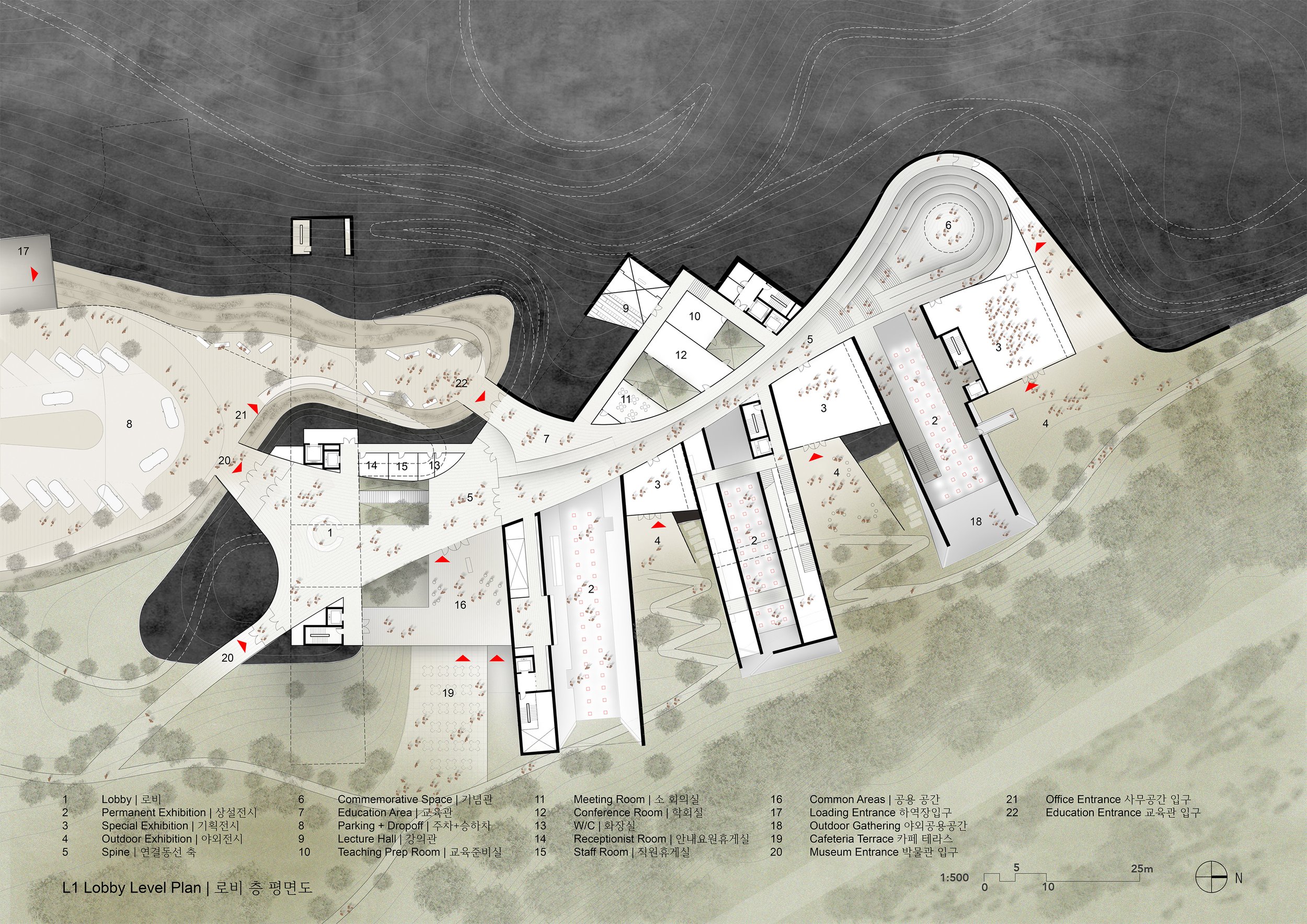

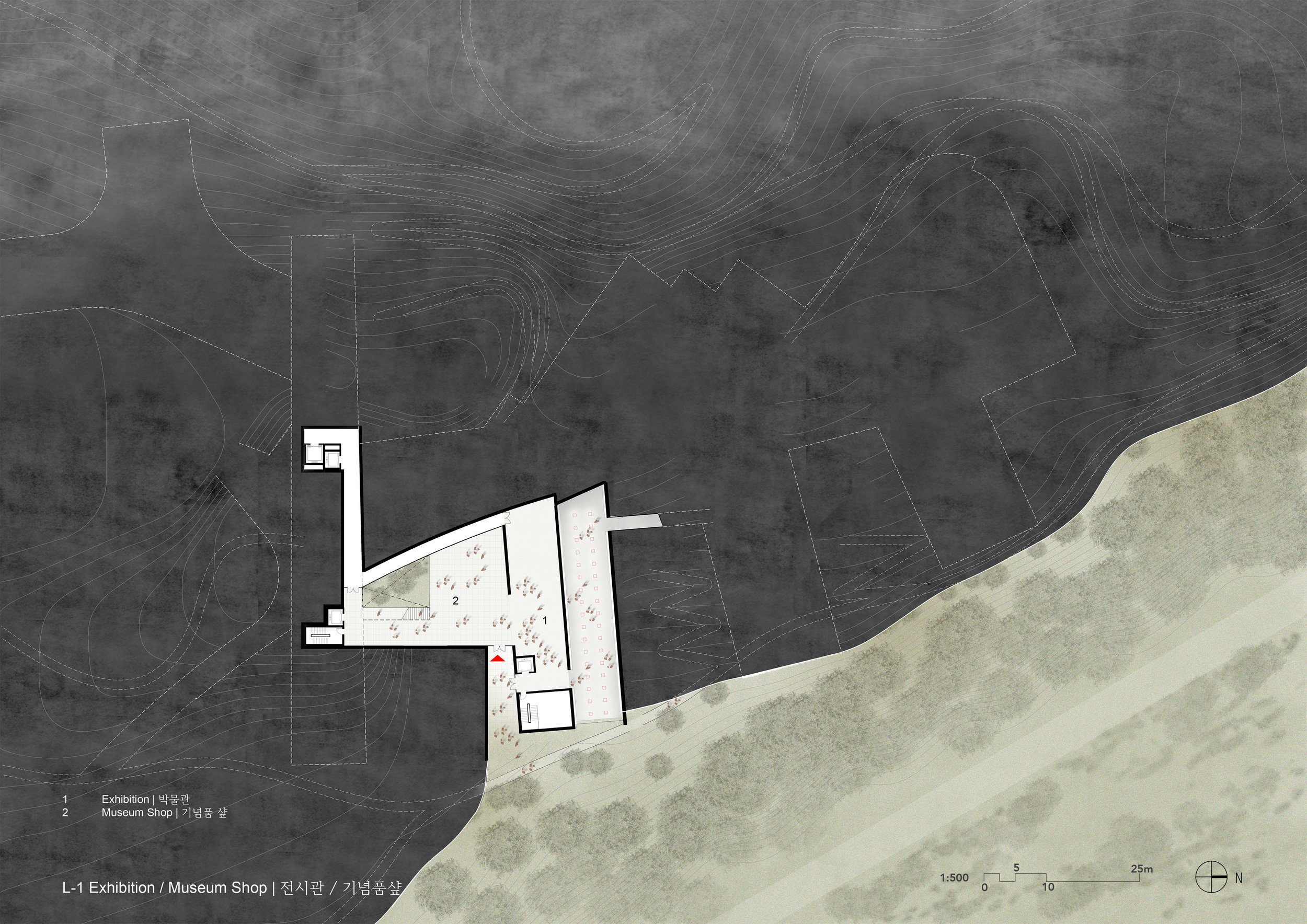
Integration of Park and Museum
To park-goers, the museum appears as a collection of objects in the hillside around which we are free to circulate. There are three central corridors for the park and mountainside which pass through the threshold of the office gateway and museum landscape. The Lower Corridor allows us to pass below the office bar and in front of the exhibition spaces, linking us with the existing bike path and sloping downward to the Yeongsan River. The Upper Corridor allows us to immerse ourselves in the natural landscape and meander up the mountainside. The Central Corridor allows us to pass through the center of the project and enjoy an expansive outdoor venue for arts and cultural events at a grand scale.
Exhibition Concept
Our proposal provides a unique integration of exhibition design and architectural space grounded in notions of sequence and healing. Light serves as an analogue for emotional sequence: calibrated with canted walls and layering motifs, we are guided through commemoration, remembrance, transition, and emergence, passing from light, to dark, and back again. Along the way, we are greeted with opportunities for repose, through the special exhibition spaces, which have access independent of the main sequence and grant us outdoor access. Experience is orchestrated through a circuit of diverse spaces that ultimately loops back through the museum shop to the lobby and cafeteria.
Recycling construction and demolition waste is a profitable and environmental way to produce aggregates and reuse valuable materials that would otherwise be disposed. Processing the waste near the worksites also reduces the need for truck transportation resulting in lower logistics costs.
